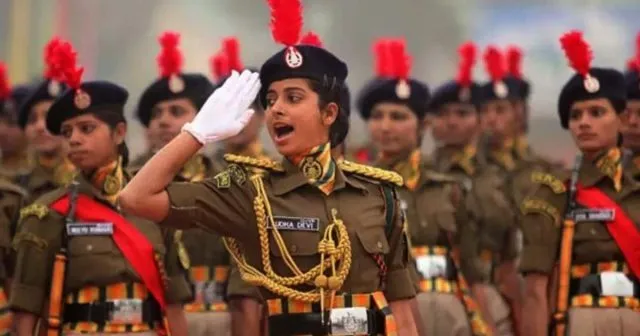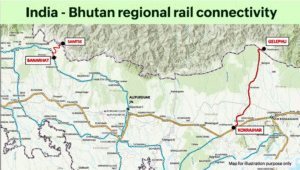
A Woman Army Chief? Why the Path Is Easier Now
Why in News?
The 148th batch of the National Defence Academy (NDA) graduated on Friday, June 1, 2025, including 17 women cadets. This is being celebrated as a historic development, creating a realistic path for women to rise to the highest military leadership roles, potentially even becoming India’s first woman army chief.
This milestone symbolizes a major stride in gender equality in the armed forces and reflects decades of legal, social, and institutional reform.
Introduction
The graduation of women cadets from the NDA is not just a ceremonial event—it signifies the opening of previously locked doors. From British-era nursing services to court-ordered gender inclusion, the path has been long, legal, and strategically important. With continued structural support and judicial intervention, women may now have a fair shot at reaching the topmost leadership roles in India’s armed forces.
Point-Wise Summary
- Long Journey to NDA Admission for Women
- 1888: Military Nursing Service established by the British.
- 1958: Indian Army Medical Corps granted regular commissions to women doctors.
- 1992: Non-medical women entered via Women Special Entry Scheme (WSES) in non-combat roles:
- Army Education Corps (AEC)
- Corps of Signals
- Intelligence Corps
- Corps of Engineers
- Women officers were inducted under Short Service Commission (SSC).
- Permanent Commission (PC) Out of Reach—Until 2008
- Women could not apply for PC except in medical roles.
- 2008: Women in Judge Advocate General (JAG) and AEC became PC-eligible.
- 2019: PC expanded to eight non-combat streams—but command roles still denied.
- Landmark Supreme Court Verdicts
- 2020: SC ruled that women officers were entitled to Permanent Commission and command roles in 10 streams.
- Court struck down sex-based stereotypes in the military.
- Cited Article 14 (Right to Equality) and Article 15 (Prohibition of Discrimination) of the Indian Constitution.
- 2021 Supreme Court Order: NDA Must Admit Women
- Apex court ordered that women be allowed to appear for NDA and Naval Academy exams conducted by UPSC.
- Result: 17 women cadets graduated in 2025 from the first co-ed NDA batch (admitted in 2022).
- Training and Integration at NDA
- NDA adopted a gender-neutral training approach.
- Minimal curriculum changes.
- Cadets—male and female—train together in:
- Physical training,
- Combat drills,
- Academics,
- Squadron routines.
- Squadron Integration Milestone
- NDA has 18 squadrons—core functional units.
- Women cadets have been fully integrated into these units since 2022.
- Live in same barracks and undergo same schedules as male cadets.
- Command-Ready Training Model
- NDA ensures women are ready for future command roles:
- Infantry
- Artillery
- Fighter Squadrons
- Navy warships
- All training activities now done jointly, regardless of gender.
- Institutional Support
- NDA has dedicated support staff for women cadets.
- Training model inspired by:
- Officers Training Academy, Chennai
- Indian Naval Academy, Ezhimala
- Air Force Academy, Dundigal
- A Monumental Shift in Military History
- General M.M. Naravane, former COAS, had predicted in 2021:
“In 30 to 40 years, a woman could be standing where I am standing.”
- Former COAS and current Mizoram Governor Gen V.K. Singh echoed this optimism.
- The vision is now materializing through steps like this graduation.
- Cultural and Policy Shifts
- Former Indian Air Force (IAF) Air Marshal told The Indian Express:
“Women must be included in leadership roles—it’s essential for modern warfare structures.”
- Equal training, equal opportunity policies are now being backed by the military brass.
- Future Discussions on Boundaries
While women are entering leadership pipelines, several policy decisions are still awaited:
- Marital status, maternity leave, spouse postings.
- Parenthood duties in high-risk zones.
- Will such roles extend to combat commands during active deployment?
Important Terms for CLAT Aspirants
Term | Explanation |
Permanent Commission (PC) | A full-career military appointment till retirement. Women earlier were only eligible for Short Service Commission. |
Short Service Commission (SSC) | Limited-period commission (typically 10-14 years). Previously the only route for women officers in many roles. |
Squadrons at NDA | The basic cadet living/training units at NDA; like extended families for cadets. |
UPSC NDA Exam | Competitive exam for entry into NDA. Earlier open only to male aspirants. |
Article 14 & 15 | Fundamental rights ensuring equality before the law and non-discrimination on grounds of sex. |
Command Role | Leading a combat or strategic unit; traditionally reserved for male officers. |
Combat Arms | Fighting branches such as Infantry, Armoured Corps, Artillery. |
JAG (Judge Advocate General) | Legal department of the armed forces. One of the first units open to women for PC. |
Legal and Social Implications for CLAT 2026 Aspirants
- Demonstrates the role of judiciary in enforcing gender equality.
- Reflects how institutional discrimination can be legally challenged and constitutionally resolved.
- Shows the importance of Article 14 and 15 in enabling social change.
- Indicates evolving civil-military relations, including policy openness to modern gender-neutral leadership structures.
Conclusion
This graduation is not just about 17 women cadets. It is a symbol of inclusive national service, constitutional promise, and military reform. With continued reforms, policy support, and judicial vigilance, the dream of seeing a woman Chief of Army Staff (COAS) in India is no longer distant—it is on the march.
For CLAT aspirants, this case offers legal insight, social relevance, and exam-worthy significance that ties constitutional law to current events.




